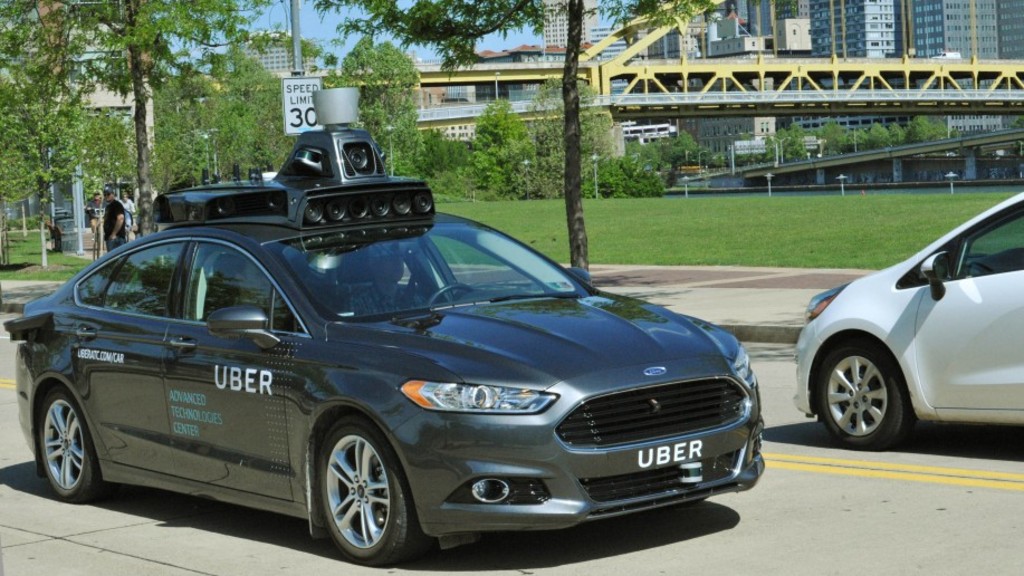Tempe city police told about the circumstances of the accident Uber

A week ago, in the city of Tempe, Arizona, USA, crashed a Uber mobile vehicle, which is being developed by the engineers of this company. Despite the fact that now the control system of the Uber robotic is not fully autonomous, the company plans to achieve complete robotization in the future. But incidents like this are a rather complicated problem that delays the development of new automatic control systems.
And in such situations an important role is played by the “guilt” of the mobile. After all, it is not so small the likelihood that regulators, having learned about problems with the next “autopilot” of one of the companies that are engaged in developments in this area, can order a complete or partial ban on such systems. And since the volume of the market of automatic control systems is measured in billions of dollars, this may mean a failure for Google, Tesla, Uber and other companies that develop robomobili and “autopilot”. So far, both Tesla and Google have been able to prove that the culprit is a human factor or an unfortunate set of circumstances. What about Uber?
Immediately after the accident, a police spokesman said that Uber's robilmo was not to blame for the accident. This car just did not miss another road user. And even despite this, Uber had to temporarily roll out tests of its cars on US roads until the situation analysis was completed. Now the situation is gradually becoming clearer , the Tempe city police have published a report about the incident.
')
Let me remind you that two cars collided on the road: Honda CRV and Uber Volvo SUV. Robotaksi followed the road with a speed limit of 65 km / h. In the car were two employees of the company, who sat in the driver and passenger seats, watching the work of the computer system. Passengers in the cabin was not. As soon as the car drove to the intersection, the yellow light came on. On the other side of the intersection, a green Honda drove out, whose driver was trying to make a left turn. The owner of the car believed that the turn was clear, but after a few moments, a rotataxi appeared at the intersection, into which Honda crashed.
This car was moving at a speed of 60 kilometers per hour, only slightly less than the speed limit allowed. According to Uber's driver, Patrick Murphy, he saw how Honda jumped out onto the intersection into a yellow light, but didn’t have time to do anything, the driver did not have time to brake. Murphy also noted that because of the dense traffic at the intersection, a "dead zone" was formed, which could not be seen, and from where Honda left. According to a Uber representative, at the time of the accident the car was in automatic mode. Other participants of the movement at this moment did not understand that a roboticaxi was driving along the road.

Photos from the scene. Uber-based Volvo mobile vehicle collided with another car
Alexandra Kohl, a Honda driver, told the police that she had not seen any cars, deciding to make a left turn. “Just when I was on the middle line for a turn, I saw a car flying along an intersection,” said Kohl.
Another witness to the incident told the police that Kohl was not to blame for anything. “It was another driver’s mistake to drive so fast. The other driver just wanted to drive through the intersection and kept going, ”said Brian Torres. The rest of the witnesses, however, say that the robotic Uber is also not guilty of what happened. At the same time, some drivers familiar with the situation believe that the computer simply did not catch the yellow light of a traffic light.
Kohl says she hit the brake as quickly as possible, but it didn’t help to avoid an accident. Other cars suffered in the incident - in particular, after the impact, and robotici and Honda caught two more cars, after which the traffic at the intersection stopped.
As far as one can understand, no one is to blame for what happened - neither Robotaxi nor Honda. The accident happened because of the "dead zone" when the driver of one car did not see the approaching robotaxi.

It is obvious that the more robo-vehicles and machines with a semi-automatic computer control system will go on the roads, the more accidents will happen with the participation of such “robots”. The problem here is not so much in the computers themselves, but in the fact that accidents will happen anyway, because sometimes, even if there is no computer or human fault, an accident is inevitable.
As for the "autopilots", their work still needs improvement. Last year, for example, the Autopilot of Tesla's electric car could not recognize a truck on the road due to the sunlight beating the sensors of the car and the color of a truck trailer.
In general, it’s too early to talk about the full autonomy of the Uber robot, and systems from other companies. It is necessary to do a lot of work on the improvement of the computer control system, before talking about at least partial autonomy. Experts believe that it will be possible to talk about progress when the AI exits the embryonic state in which systems of this type are located now. When this happens is a big question.
Anyway, the work continues - robomobils from Tesla, Google, Uber, Mercedes and other companies continue to drive on the roads. As for Uber, three days after the accident , it was decided to start testing again.
Source: https://habr.com/ru/post/373317/
All Articles